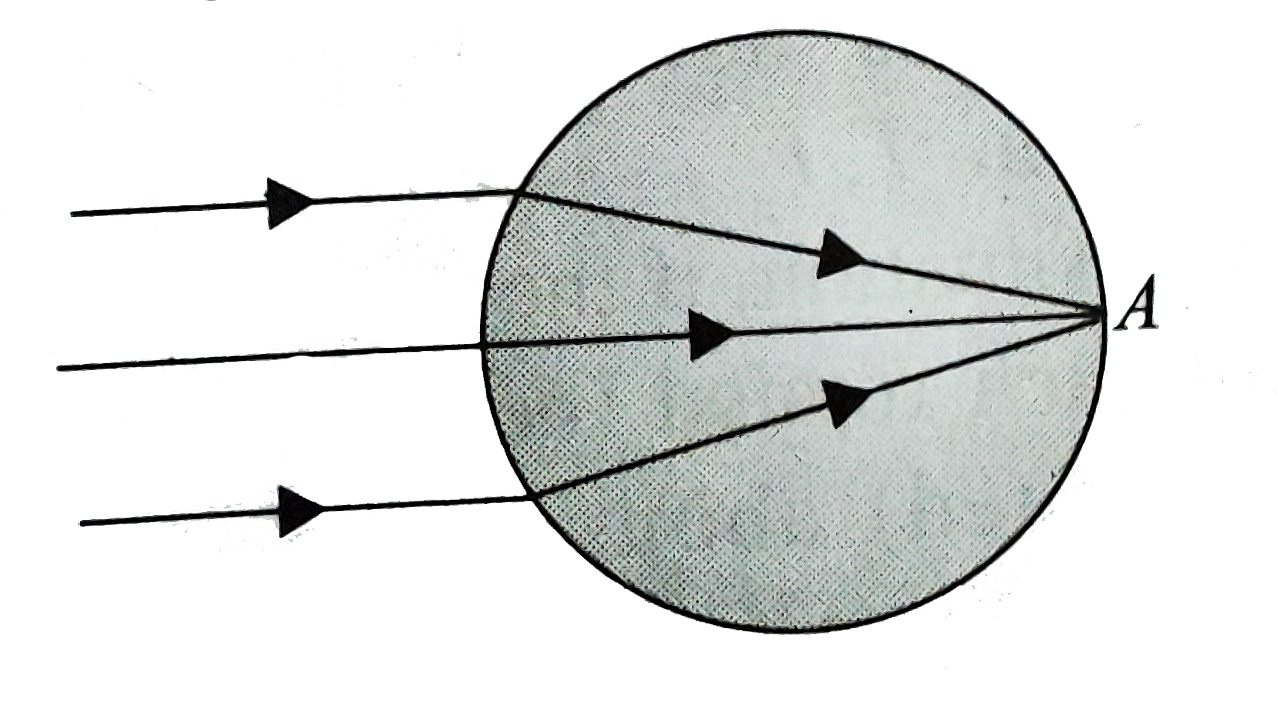A parallel beam of light falling on the eye gets focused on the retina because of refractions at
the cornea
the crystalline lens
the vitreous humor
various surfaces in the eye
The correct Answer is:D
Topper's Solved these Questions
Similar Questions
A parallel beam of light falls on a solid tranparent sphere.

Q. For what value of refractive index μ, the thin beam can be focussed at centre of sphere.
View SolutionA narrow parallel beam of light falls on a glass sphere of radius R and refractive index μ at normal incidence. The distance of the image from the outer edge is given by-
View Solution
Knowledge Check
When light enters the eye and is focused on the retina, most of the bending occurs at the
AcorneaBcrystalline lensCretinaDpupilHuman eye focuses image on retina by
Ato and fro motion of eye lensBto and fro motion of retinaCvarying convexity of eye lensDvarying refractive index of eye fluidA parallel beam of light falls on a solid tranparent sphere.

Q. For what value of refractive index μ, the thin beam can be focussed at centre of sphere.A1.5B2C2.5Dnone of these
A parallel beam of light of wavelength 560 nm falls on a thin film of oil (refractive index = 1.4). What should be the minimum thickness of the film so that it strongly S4 T z reflects the light ?
View SolutionA parallel beam of light of wavelength 560 nm falls on a thin film of oil (refractive index = 1.4). What should be the minimum thickness of the film so that it strongly transmit the light ?
View SolutionRefraction of light in the eye occurs at :
View SolutionIn a dark room, a parallel beam of light falls on a plane mirror and another parallel beam of light falls on a white wall. The light reflected by the mirror can be seen only in a certain direction, but the reflected light from the wall can be seen from anywhere. Give reason.
View SolutionRefraction of light in the eye occurs at :
View Solution
